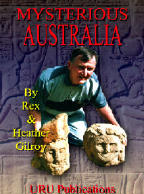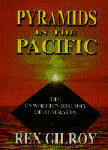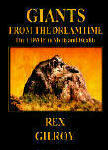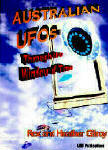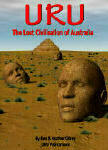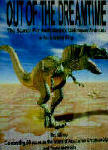When the number of early European sightings reports are studied it is obvious that there were far
more relict hominid sightings throughout the 19th and early 20th centuries than there are today.
The early European settlers first came to know about the “hairy people” from Aborigines they
befriended and took the existence of these primitive people for granted, regarding them as another race
with which the Aborigines had shared the continent. They also came to learn about pygmy-size beings
and also giants that roamed the mountain forests of the western ranges.
As civilisation began to spread, in the wake of the land clearances, these primitive races
retreated deep into the mountain country, where they apparently still reside. Yet as the 20th century
wore on their numbers appear to have decreased, so that today, like the little pygmy folk, there are
fewer sightings. Giant beings are also occasionally encountered, but even these reports have decreased
over the years.
There can be no doubt that these relict Homo erectus survivors, are gradually losing ground
and will some day go the way of Australopithecus and the Neanderthals.
Yet we still have time to learn more about these races, survivors from Australia’s Old Stone-
Age who prefer to keep clear of the modern dominant species, Homo sapiens, for with our guns we are
a greater threat to them than they ever were against themselves in their own Stone-Age conflicts.
When we discard the great many hoax reports and other unreliable evidence, we are left with a
small amount of reliable material which shows that Australian relict hominids have been losing ground
for quite some time.
So the question arises: just how many relict hominids still survive in Australia?
This is a hard question to answer, particularly when either a single individual or even a small
family group, might be reported seen by different eyewitnesses many kilometres apart as the hominids
move from one place to another. Sometimes several separate reports of the same primitives will be
made, giving the impression of a much larger local Yowie population for a given region than there
really is. This example is also valid for sightings reports of pygmy-size Homo, as well as giant hominids.
If we concentrate upon certain areas of eastern Australia, chiefly the mountain ranges, we can
arrive at a rough estimate which can be applied to the rest of the continent.
For example, the Australian Yowie Research Centre, established by us at Katoomba back in the mid-1970s for the purpose of making a scientific investigation of the Australian relict hominid mystery,
has been the scene of extensive research on the population issue, in the course of which the surviving
regions of Yowie activity were pin-pointed.
From a study of all available campsites and recently manufactured implements it is possible to
get some idea of approximate population figures for a given area.
The Blue Mountains provide an excellent opportunity for these researches. In 2000 I began a
study of apparent recently manufactured stone tools found over a wide area of the Blue Mountains.
Out on Narrow Neck Plateau, which extends to the south-west of Katoomba Township, to overlook
the Megalong Valley on its western side and the Burragorang Valley to its south, I collected a large
number of apparent recently manufactured stone tools. Primitive in their workmanship, they certainly
compared with far older Homo erectus tool-types.
In a few other rock shelter situations I came across small tools which could be said to be those
of pygmy –size hominids.
I have already described the creek that drops down from the Plateau into the Megalong Valley
below, and which, since ancient times, has been used as an access to and from the summit by Stone-
Age people. It is within this gully that traces of ancient, as well as more recent tool-makers have been
found, as well as above upon the summit.
It was above this gully outside a rock shelter in November 2000 that I uncovered a number of
recently manufactured tools, consisting of both basalt and river pebble type.
There were 27 in all,
consisting of bone-smashing tools, scrapers and chopping implements. Yet as the types of stone were
not local they had to have been transported up here from the valley. One chopper measured 12cm in width by 6.3cm tall and 4.5cm thick. A grey basalt specimen, it
was used to smash bones to obtain the marrow within. One scraping tool, made of a yellowish pebble
and finely flaked around the cutting edge, was 6cm tall by 6.2cm width and 3cm thick. It would have
been used for scraping animal hides among other uses.
Most of the tools looked to be as recent as perhaps a few months old and their edges, some of
which showed secondary chipping, looked as if they had hardly been used. In fact, I had the feeling that
these tools had been left by someone who intended to return at some stage. Perhaps ‘he’ or ‘they’ had
returned to the valley.
Rex Gilroy
Australian Yowie Research Centre,
Katoomba, NSW
Monday 25th June 2007


